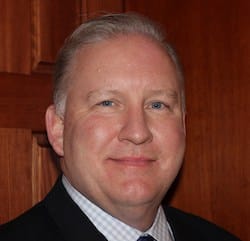
By Tim O’Malley
Skilled nursing facilities (SNFs) across the nation are facing unprecedented challenges in a dramatically changing market. Financial pressures, growing competition of home healthcare, reimbursement changes, new quality measures, penalties for hospital readmissions, and staffing considerations are all at the top of the SNF executive agenda.
Today, caring for long term patients means supporting, or at times even replacing, the care provided by hospitals and clinics. These facilities play a crucial, yet often overlooked, role in the healthcare chain and they deserve the best support and tools available to continue this important work while facing their new reality.
That’s why SNFs are implementing a variety of strategies, best practices and programs, and also turning to technology to help meet the demands placed upon them – both clinically and financially. One of the innovative technologies helping SNFs navigate these challenging times is contact-free continuous monitoring (CFCM).
As its name suggests, this technology monitors patients continuously, providing real time data and alerting staff to potential dangers for improved care as well as early intervention. The contact-free approach creates a crucial safety net without bothering the patient with spot checks, manual hookups or wires.
Here are five ways CFCM technology is helping support SNFs:
- Dealing with Reimbursement Changes – With recent CMS and Medicaid changes, the patient experience is now tied to reimbursement and Five Star Ratings. This has forced facilities to do everything in their power to create the best patient experience possible. Leveraging advanced technology like CFCM not only enhances the patient experience, it also allows facilities to prioritize and improve the care they provide to their residents.
- Increasing Acuity of Care – While it may have been easy to turn down high acuity patients in the past, in order to remain competitive, facilities are now interested in accepting higher acuity patients. But these challenging cases often increase the demands on skilled nursing facilities. CFCM provides an effective solution to help accept referrals and treat these patients, by providing an added layer of clinically-validated automated monitoring.
- Reducing Readmissions and Related Costs – SNF administrators are all too familiar with the impact that hospital readmissions have on their facilities, both financially and operationally. The nature of CFCM is that it detects potentially adverse events early and enables intervention to help prevent those events from playing out or escalating. Evidence-based models suggest that CFCM can help SNFs reduce readmissions by about 20%, translating to tremendous savings. Of course, reducing readmissions also improves relationships with hospitals, creating a win-win situation for both patients and providers.
- Effectively Supporting Staff – Unfortunately, many SNFs still struggle with insufficient nurse staffing levels, with some studies linking this to additional hospitalizations. Tools like CFCM are helping staff prioritize and divide their time effectively between patients. With real-time data and alerts, nursing teams are equipped to take swift action when it is needed most. At the same time, new labor efficiencies created also impact the facility’s profit margin.
- Standing Out in the Local Market – From a qualitative perspective, it is clear that patients and families are seeking out the best facilities within their reach. Attractive facilities that offer the latest advances in patient technology are often viewed favorably. Marketing programs and initiatives around CFCM and other technologies are helping SNFs position themselves as modern and cutting-edge, helping to raise their profile in the local and sometimes crowded landscape.
While investment in new supporting technologies is not always at the top of the priority list, it is clear that CFCM provides several avenues to help SNFs face today’s challenges. Early adapters are already enjoying improvements to patient care and their bottom lines while also looking toward bigger returns in the long run. As regulation and long-term care continue to evolve, more facilities will use technology to bridge the gap between creating a positive patient experience and care and attaining operational and financial goals.
Tim O’Malley is President and Chief Growth Officer of EarlySense.
The Editorial Team at Healthcare Business Today is made up of skilled healthcare writers and experts, led by our managing editor, Daniel Casciato, who has over 25 years of experience in healthcare writing. Since 1998, we have produced compelling and informative content for numerous publications, establishing ourselves as a trusted resource for health and wellness information. We offer readers access to fresh health, medicine, science, and technology developments and the latest in patient news, emphasizing how these developments affect our lives.








